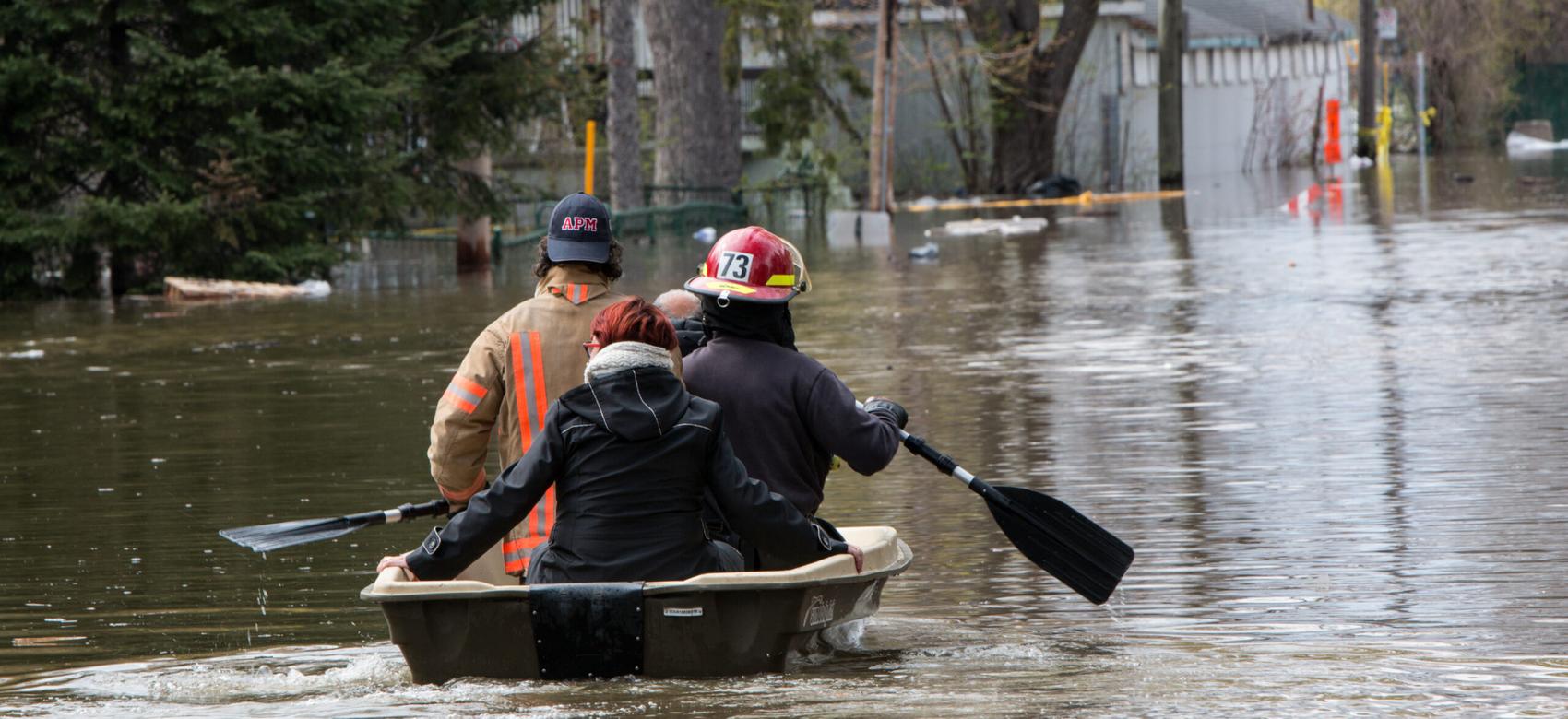Urban flooding calls for new stormwater infrastructure in Canadian cities
By Mauricio Carvallo Aceves

Urban flooding is increasingly concerning in Canada, where water drainage systems are at risk of being overwhelmed. Natural watersheds have been greatly altered by construction disturbing the natural ways that water flows from rainfall, across the land and into water bodies. The result is that drainage infrastructure must cope with increased water volumes at both higher speeds and flow rates, as well as deteriorated water quality due to pollutants such as oil and organic waste.
Additionally, stormwater mixes with wastewater in the drainage network in the combined sewer systems that were widely developed in the past. Sudden and heavy rainfall can lead to the network overflowing beyond its capacity, discharging untreated sewage into neighbouring water bodies. This has severe consequences, such as toxic algae blooms that deplete the oxygen found in the water, potentially killing aquatic plants and animals.
In the coming decades, storm intensities are expected to increase, potentially exceeding the design capacity of older networks. Reducing runoff flowrates and volumes through blue-green infrastructure could provide some much-needed relief to drainage systems that may be overwhelmed as stronger rain events become more frequent.
The good news is that there are actions to restore the natural hydrological cycle, which would make Canada’s cities more flood-proof.
Blue-green infrastructure
Engineering practices incorporating artificial and natural elements attempt to re-establish the natural water cycle that existed before urbanization. These can include slowing down stormwater runoff flows, retaining them for a given period of time, and infiltrating water into the ground where possible.
Multiple terms are used to refer to these practices, such as nature-based solutions, blue-green infrastructure, best management practices or low-impact development.
There are many existing examples in Canadian cities, such as: green roofs that soak up rain, rain gardens that can filter out pollutants, and ditches covered in plants that can reduce the speed of water flow.
Some of these blend seamlessly into the surrounding urban environment, and may be unnoticed by people passing by who may be unaware of the key role that these spaces play in managing stormwater.
Reducing volumes
New urban developments are already integrating these forms of blue-green infrastructure in their planning.
For older, already existing drainage systems, retrofitting existing underground drainage networks with blue-green infrastructure will be crucial to deal with combined sewer overflows (CSOs). The most effective way to reduce CSOs is to reduce the stormwater flow that is directed towards the drainage network. Ideally, stormwater would never mix with wastewater, but achieving that would require redoing the entire drainage system in some areas, which is unfeasible.
This is where adding blue-green infrastructure can prove useful to reduce runoff flows and volumes at multiple points across existing networks, decreasing the possibility of overwhelming them.
Urbanists and planners have taken advantage of such opportunities to fully revitalize the built environment, incorporating more green spaces into streets and improving the design of elements such as sidewalks, cycling lanes and public spaces.
Recent examples include the installation of tree trenches along Richards Street in downtown Vancouver in 2020, or Montréal’s new “sponge parks” that absorb water from surrounding streets during heavy rains.
Even in areas where CSOs are not an issue or where dedicated stormwater networks exist, retrofitting existing drainage networks with blue-green infrastructure will be an asset to mitigate the impact of climate change.
Challenges of retrofitting
Retrofitting existing drainage networks with blue-green infrastructure is not straightforward. Cities face the logistical headache of planning and executing roadwork, and there are also multiple constraints on a technical level. Each form of blue-green infrastructure has specific requirements for elements like terrain slope, maximum area drained and soil types, among others, restricting where they might be implemented.
Available space is an issue itself for practices like rain gardens or retention ponds, especially in dense urban areas where different land uses compete for the scarce land available. The depth and layout of existing utilities may also render connections between blue-green infrastructure and the drainage network impossible unless significant stretches of pipes are replaced.
In some cases, the limitations may even be external to the municipal drainage network itself. Some older buildings have a single connection out from the building towards the municipal network. As such, all of the wastewater and any stormwater collected in the building’s internal piping get mixed before it even leaves the lot.
Storm-proofing cities
Urban planners and municipal governments around the world started to slowly address these issues more directly decades ago, but centuries of harmful urbanization practices cannot be undone overnight. Most communities in Canada moved away from building combined sewage networks in the 1950s and started implementing separated wastewater and stormwater networks.
There are now thresholds that new developments must meet in terms of flow rates directed to the municipal drainage systems, as well as the maximum admissible concentration of certain pollutants present in stormwater. Provincial guidelines in Ontario, Metro Vancouver and Québec address these.
The City of Vancouver implemented a target to intercept and clean 90 per cent of the annual rainfall volume.
There is still much work to be done. However, the opportunity to transform our cities’ landscape, our relationship with stormwater and our impact on the receiving water bodies is here. Given the limitations discussed above, some of these improvements will be slow. Ultimately, that is precisely how incremental shifts add up: small trickles come together to form rivers of change.
Mauricio Carvallo Aceves is a doctoral student at UBC’s Institute for Resources, Environment and Sustainability. This article was republished on September 19, 2024, from the original article in The Conversation under a Creative Commons license. Read the original article. To republish this article, please refer to the original article.


